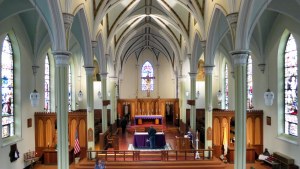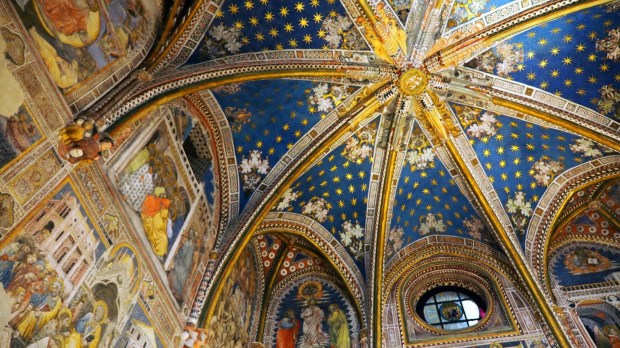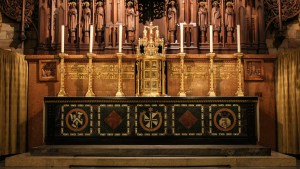In Catholic architecture, one of the most common features of a church is the vaulted ceiling. This generally refers to a ceiling that is constructed higher than what is needed.
Most churches do not need a vaulted ceiling, as the structure of the building does not require such a feature. As a result, a vaulted ceiling is an “unnecessary” part of Catholic church architecture.
However, there is much symbolism that is involved with a vaulted ceiling.
Upside-down ship
The Church is often called the “Bark of Peter” or the “Ark of Noah.” Both names recall the function of the Church as a “ship” that carries us to the “port of Salvation.”
Furthermore, the parish church is seen as a ship that protects us from the storms and waves of the world.
Architects then constructed the ceiling over the nave in a vaulted fashion, exposing the wooden beams, which resembled the reversed look of a ship’s keel.
Every Catholics attend Mass, they are reminded of this symbolism.
Heaven on earth
Another reason why Catholic church ceilings are vaulted or even elevated beyond what is necessary is to remind us of Heaven.
Sometimes artists portray this visually by painting it blue with stars, or by painting scenes of the saints and angels in Heaven.
In human history looking up has always been associated with looking up at the “heavens,” and while God doesn’t physically exist in the sky, the act of gazing upwards has a spiritual effect of reminding us of our ultimate destination.
Furthermore, the celebration Mass is meant to be an intersection of Heaven and Earth, so the vaulted ceiling recalls this profound reality.
While churches are not required to have such a high ceiling, this architectural feature has a unique ability to remind us of these spiritual truths and raise our hearts and minds to God.



